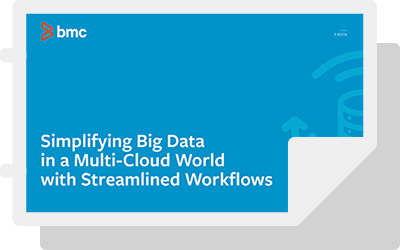
Let’s talk about your 24x7x365 business—that’s right, your business is always on. You may go home at 5pm (on a good day), but there are critical business functions happening all the time. And many of these business functions include the transfer of a file. For example, retailers regularly send pricing update files to stores. If that doesn’t happen on time, revenues could be impacted. And if a critical payroll file transfer doesn’t happen on time, your employees may not get paid.
If you’re in business, you transfer files. The average company transfers thousands of files every single day. In fact, file transfers represent one out of every five jobs scheduled through workload automation solutions. IT organizations must be prepared to execute file transfers faster and more frequently, in a visible and reliable way, to keep up with all the critical workloads and applications that require support.
Yet many companies still use multiple tools and teams to support file transfers and their related workflows. Does yours?
It’s far too risky to manage file transfers that way. Leveraging multiple systems impedes your ability to clearly understand the status of file transfers, and the service level agreements (SLAs) and business processes that could be impacted if a transfer fails. That’s no way to operate.
According to recent Forrester research, when companies don’t consolidate and automate transfers, they’re likely to have problems that require more manual effort and expertise. In fact, 67% of companies without an enterprise-wide job scheduler lack integrated and managed file transfers, which leads to errors and business issues.1
To simplify and improve file transfers and related application workflows, they should be tightly integrated. So, if your file transfer solution is only capable of transferring files but doesn’t automate your business, then it’s time to consider one that does. Here are six key capabilities your enterprise workload automation and managed file transfer solution should provide:
- Automate workflows and file transfers from a single point of control
With multiple systems, you can’t fully understand when file transfers and processing will be completed. To get clarity and improve visibility for all stakeholders (while also keeping your customers happy and maintaining your team’s sanity), you need to manage file transfers with a single, integrated solution. Your solution should let you build, schedule, and manage file transfers just like any other batch job, while providing role-specific views in a consistent and comprehensive way. - Securely manage external file transfers
Your company transfers files externally to customers and business partners every day. Make it easy for your partners by giving them a way to upload and download files to and from folders they are entitled to access. And your solution should support protocols, such as FTP, SFTP, FTPS, and PGP encryption. - Provide simplified audit and compliance capabilities
Regulations change frequently, and you need to have accurate records of your file transfers that are easy to access. They should also enable you to generate comprehensive reports for internal and external file transfers. - Deliver predictive/proactive SLA monitoring and alerting
Having a dashboard view of file transfer status and endpoint activity, integrated with related non-file transfer workflows, offers visibility to all file transfer operations so that problems can be addressed before they impact your SLAs and your customers. - Reduce complexity and costs with a solution that’s easy to use and access
Productivity improves when you don’t have to do scripting for transfers and people in your organization can access what they need from their desktops or mobile devices. With a single point of control, you can reduce time and expense for licensing and supporting multiple file transfer solutions. - Increase reliability with enterprise level automation
File transfers and related workloads are critical to all your business services. You need a robust and reliable solution that supports your enterprise all day, week, and year long.
The bottom line—don’t manage file transfers one way and workloads another. It’s far too costly and risky. Choose a solution that enables you to see file transfer status, understand application workflow impact, and deliver mission-critical business services confidently.
Looking for a file transfer solution? I’d love to hear more about the capabilities that matter most to you!
Control-M, BMC’s Digital Business Automation platform, helps you securely automate internal and external file transfers, integrating them with all of your critical applications and activities, to increase your visibility and control.
Learn more—watch this on-demand webinar to see how you can get a clear picture of your file transfers and the impact they have on your business services.
1 Forrester Consulting on behalf of BMC, Infographic, Enterprise Workload Automation Enables Integration and Managed File Transfer, May 2016.↩







